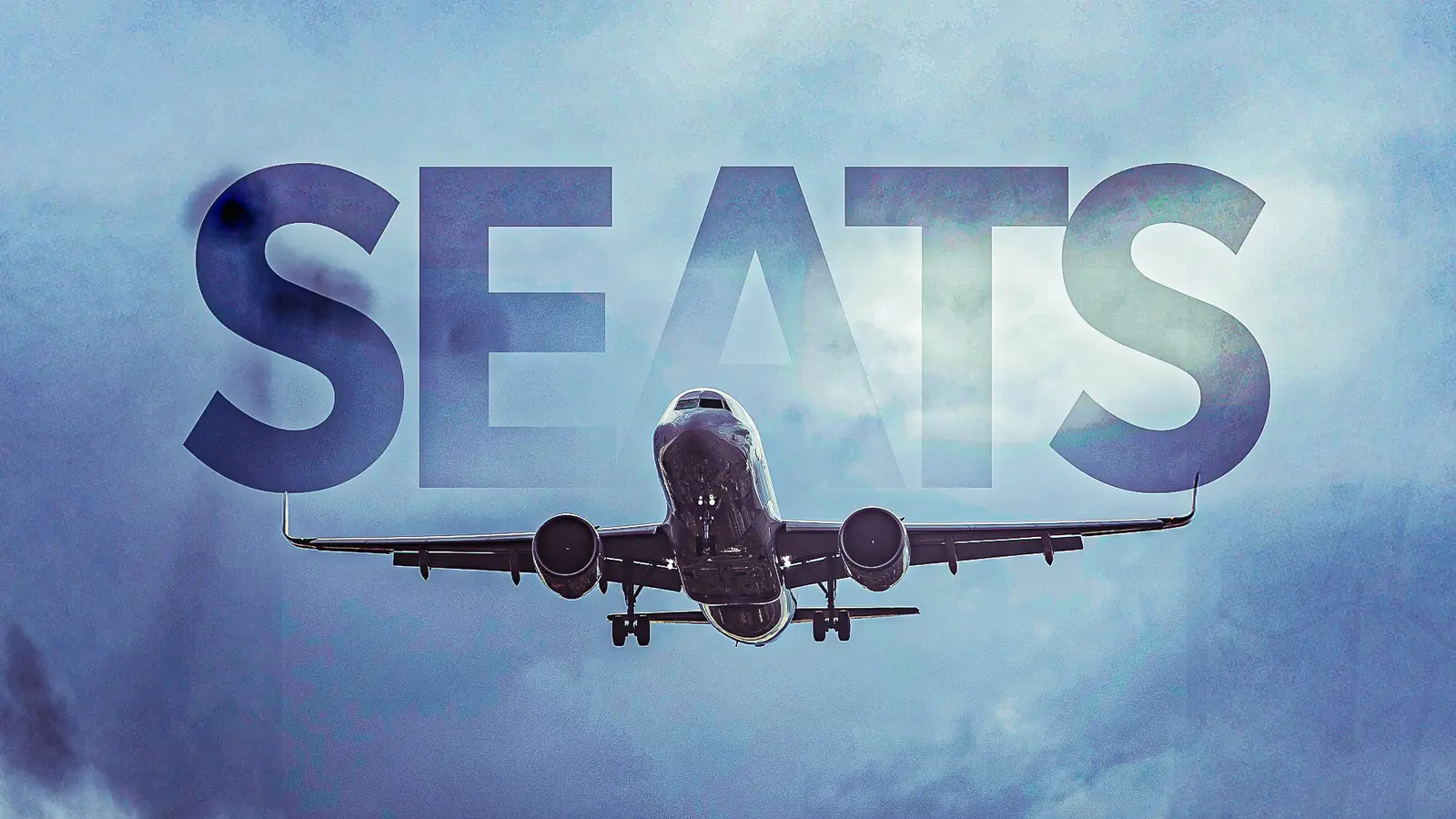Copyright Simple Flying

American Airlines holds the title of the world’s largest airline when measured by fleet size, scheduled passengers carried, and revenue passenger miles. With nearly a thousand aircraft and an expansive global network spanning six continents, the carrier’s scale reflects both its proud legacy and its ongoing role at the heart of the global commercial aviation industry. In this article, we will use data from OAG, a leading aviation analytics platform, to take a closer look at the number of seats operated by American Airlines throughout the 2025 summer season. We will also explore the carrier’s modernized fleet, its extensive network of strategically located hubs across the US, and how these elements position American Airlines for continued growth in an increasingly competitive global market. 151.7 Million Seats The latest data from OAG shows that in summer 2025, American Airlines operated a staggering total of 151.7 million seats. The incredible scale of American Airlines' operation reaffirms its position as the world’s largest airline and is reflective of strong travel demand across both domestic and international markets. The figures go on to show that American Airlines was, by some margin, the largest carrier in the US in summer 2025 when measured by the number of seats available. The oneworld carrier is followed by Delta Air Lines, with 136 million seats, Southwest Airlines, with 132 million seats, and United Airlines, with 117 million seats. The subsequent jump in the number of seats between the four largest airlines and the rest of the top ten is astounding, with the country's four largest airlines accounting for 74% of all seats. The Rest Of The Top Ten While American Airlines is the clear winner when it comes to the US carriers operating the most seats in summer 2025, it faces stiff competition from a range of full-service and low-cost carriers. The largest carriers in the US in summer 2025, when measured by number of seats, are outlined in the table below: American Airlines' Ten Hubs American Airlines operates from an astonishing ten hubs nationwide, with a presence throughout the US. These are Charlotte Douglas International Airport (CLT), Chicago O'Hare International Airport (ORD), Dallas/Fort Worth International Airport (DFW), LaGuardia Airport (LGA), Los Angeles International Airport (LAX), Miami International Airport (MIA), New York John F. Kennedy International Airport (JFK), Philadelphia International Airport (PHL), Phoenix Sky Harbor International Airport (PHX), and Ronald Reagan Washington National Airport (DCA). American Airlines' market share at each of its ten hub airports is shown in the table below, in order of size: Let's take a closer look at American Airlines' operations at two of its largest hubs - Los Angeles International Airport and Miami International Airport. American Airlines At Los Angeles International Airport (LAX) Los Angeles International Airport (LAX) serves as American Airlines' primary transpacific hub and plays a significant role in the carrier's West Coast domestic and international operations. American Airlines operates mainly out of the airport's Terminal 4, but also has a presence at Terminal 5, and has a market share of around 15% at the airport, behind Delta Air Lines (19%) and United Airlines (16%). From this hub, American Airlines operates more than 200 daily flights to over 70 destinations across North America, Asia, Oceania, and Latin America, making it the only airline at Los Angeles International Airport with nonstop service to five continents. Among the transpacific destinations served by American Airlines from the airport are Auckland Airport (AKL), Sydney Airport (SYD), and Tokyo Haneda Airport (HND). The carrier, in conjunction with Los Angeles World Airports (LAWA), recently kicked off a major $1.6 billion modernization of both Terminals 4 & 5, aimed at upgrading check-in, security, gate areas, and baggage handling to enhance the customer experience. As one would expect from the hub of a major international operator, lounge amenities are substantial, with some of American Airlines' flagship ground services available. American Airlines At Miami International Airport (MIA) Miami International Airport (MIA) is American Airlines' primary gateway to Central and South America. From this South Florida base, the carrier operates hundreds of daily flights, connecting Miami not only with cities across the US, but also with key destinations in Central and South America, the Caribbean, and Europe. The airport's location gives American Airlines a strategic advantage, allowing it to dominate the US-Latin America market while also maintaining strong transatlantic links. American Airlines' hub at Miami International Airport has grown steadily since the airline established a significant presence there in the late 1980s. Today, it is the largest carrier at the airport by a wide margin, responsible for around 57% of all passenger traffic, with its operation supporting tens of thousands of local jobs. American Airlines has also invested heavily in improving the passenger experience at Miami International Airport, with its North Terminal boasting upgraded check-in areas and lounges, including its brand new Flagship lounge. Miami International Airport sees American Airlines deploying a substantial number of its widebody aircraft on routes to Europe and South America, including the Boeing 777-300ER and 787-9, and as travel demand grows, American Airlines continues to strengthen its presence at the airport. The busiest international routes across all carriers from Miami International Airport in 2024 are listed in the table below: About American Airlines American Airlines' roots can be traced back to April 1926, when a bag of mail was flown from St. Louis to Chicago by pilot Charles Lindbergh for one of its predecessor companies. Over the subsequent decades, it evolved by merging numerous small carriers, becoming a major US airline under the name American Airlines in 1934. As the airline industry became deregulated and commercial air travel really began to take off, American Airlines continued to expand its reach through several mergers and acquisitions, the most recent of which came in 2013, when the carrier merged with US Airways. Today, American Airlines is headquartered in Dallas/Fort Worth and operates a staggering fleet of more than 1,000 aircraft, according to the latest data from ch-aviation. The carrier is currently partway through a major fleet modernization program, retiring or retrofitting some of its older aircraft and taking delivery of more modern replacements, such as the Boeing 737 MAX series and the Airbus A321XLR. American Airlines' mainline fleet is outlined in the table below: American Airlines has long been a pioneer in the world of commercial aviation, launching the first major airline frequent-flyer program in the early 1980s, known as AAdvantage. The carrier was also one of the early adopters of computer reservation systems, and was one of the founding members of the oneworld alliance in 1999, together with British Airways, Canadian Airlines, Cathay Pacific, and Qantas. Despite its expansive reach and impressive fleet size, American Airlines has had to face several major challenges in recent years, including heavy debt burdens following its merger with US Airways and significant disruption as a result of the COVID-19 pandemic, in addition to ever fiercer competition across domestic and international markets. Going forward, the carrier continues to focus on improving its reliability and strengthening its global network, and it would take some major expansion from other carriers to topple American Airlines from its position as the largest airline in the US when measured by the number of seats.



